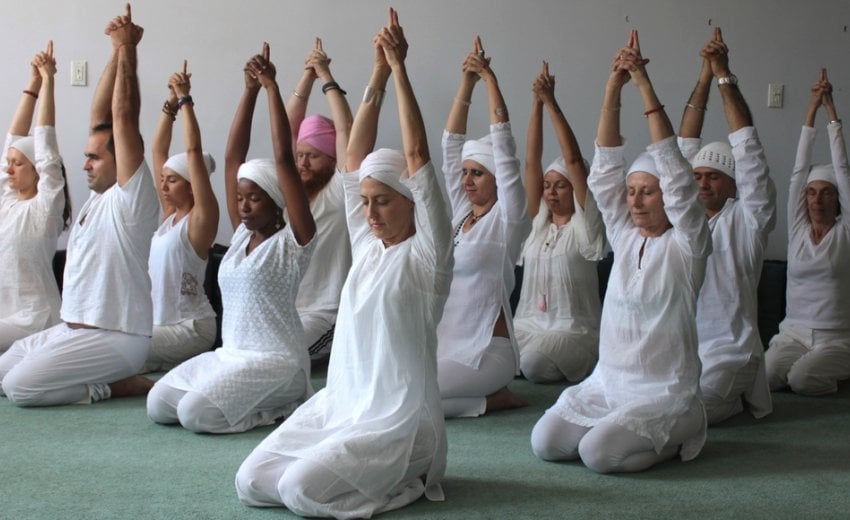According to specialists in Hindu culture, Kundalini is a primordial energy or force that is numb at the base of our spine and constitutes the first chakra. An energy that is identified with latent creativity in each individual and is often represented as a screwed snake.
When the energy awakens, this serpent rises by the spine and is purified through the different nuclei of energy or chakras, reaching personal fullness in the physical, mental, and spiritual plane.
The Kundalini Yoga is considered to be primitive yoga, its most dynamic exercises. Kundalini Yoga’s practice favors the development of attitudes that lead us to achieve well-being, emotional balance, and happiness.
Definition of Kundalini Yoga:
Kundalini Yoga is defined as the yoga of consciousness or energy since it aims to awaken from cosmic energy. The energy that awakens by performing asanas or poses of yoga, pranayama or breathing techniques, mudras or psychic gestures, bandhas or energetic keys, mantras or mystical sounds, visualizations, and meditation techniques.
A practice that seeks to activate seven energy centers spread across the spine and whose awakening involves entering higher levels of consciousness.
Benefits of Kundalini Yoga:
The benefits of Kundalini Yoga are multiple and are:
- Strengthen the abdominal muscles.
- Reduces stress and anxiety.
- Help improve the flexibility of the spine.
- Strengthen the immune system.
- Strengthen the nervous system.
- Improve memory thanks to meditation exercises.
- It provides well-being by revitalizing and rejuvenating the body and mind.
- Increase creativity.
- It favors emotional self-control.
- It provides a more optimistic view, dissolving the negativity.
The Most Typical Kundalini Yoga Postures:
Among the most outstanding positions are:
Crow Pose
This is one of the basic positions of the Kundalini, although it is one of the most reticence that can arise in the seemingly complex beginners.
It starts in squats, with separate feet and knees wider than hips. We place our hands on the floor with the palms leaning and fingers extended. Stubptly and keeping your elbows bent, we lift your hips.
Once we get it, we put our knees in the back zone of the arms, as high as we can. You can choose to go up one foot and help us by placing yourself on a cushion or other support. It is recommended to maintain the position for 5 or 10 breaths and press the ground with your hands. We go back to the starting position.
Frog Posture Or Posture of The Second Chakra, The Sacred Chakra (Svadisthana)
This posture regulates the energy of the first three chakras, including that of the sacra, providing vitality and energy, in addition to toning and strengthening the legs, also relaxing the lumbar area, and improving blood circulation.
The posture begins by sitting squatting with his heels together and something high. Looking at the forehead, we put the tips of our fingers on the ground between our knees. As she was a frog willing to jump, we inhaled as we lifted our hips and maintained our posture.
We exhale going down again to the initial position. It is recommended to repeat the exercise about 26 times. If you don’t get to the ground with your hands, we can always help with blocks or a cushion.
Stretch or Posture For The Third Chakra, Solar Plexus (Manipura)
We started lying on the floor face up and on a mat, feet together and arms stuck to the body. From there, we lift our feet and head about 10 centimeters, while raising our arms in such a way that the palms are faced.
In that posture we start to do long and deep breaths, we take a quick breath, that is, a deep inhalation and rapid exhalation, to start again a slow and deep breathing cycle. A respiratory technique known as fire breathing.

